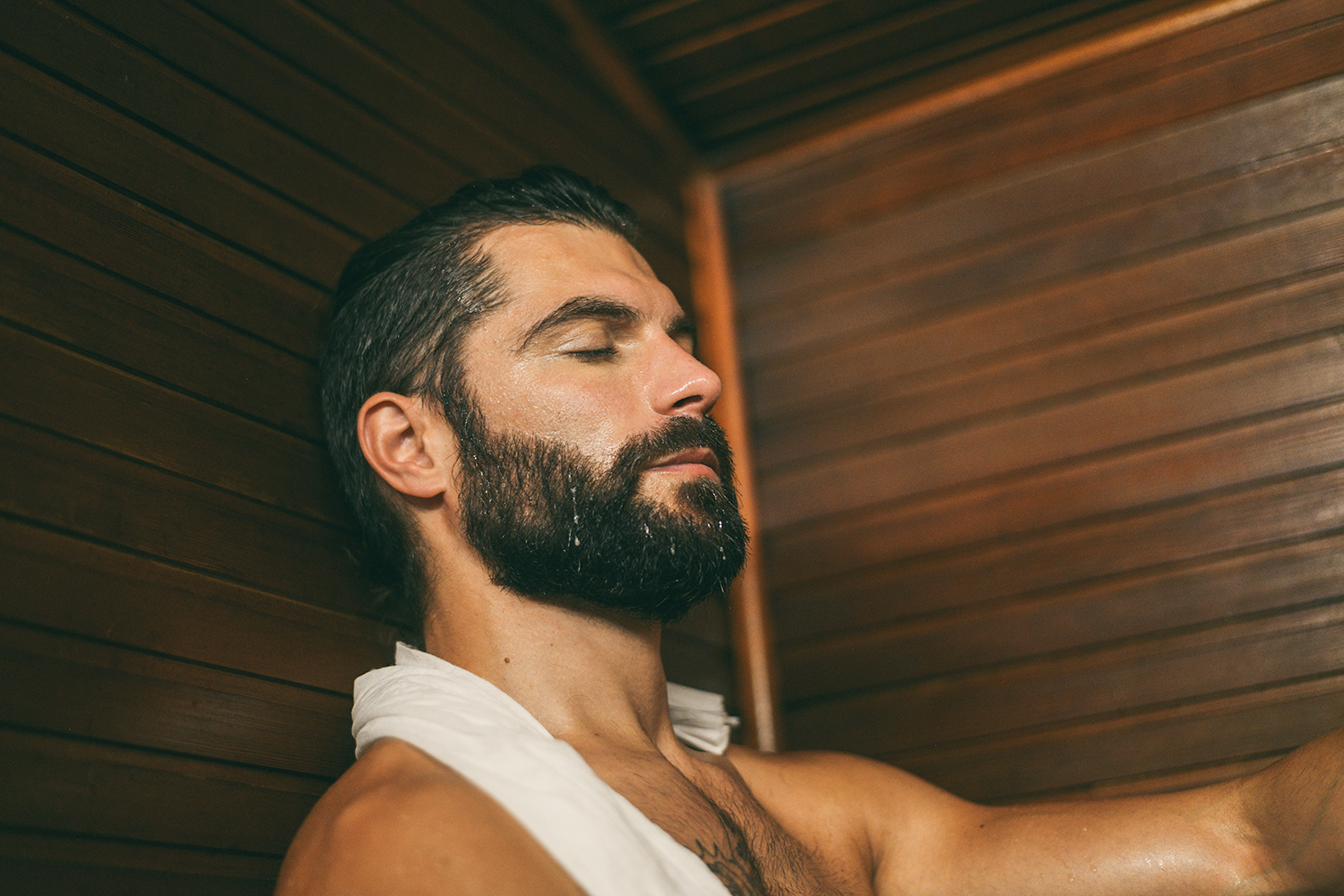A few studies have identified an association between frequent sauna use and lower sperm quality.
But are these effects permanent? And do the potential benefits of sauna use outweigh any risks?
The Potential Risks of Sauna Use
One study, led by Dr. Andrea Garolla, a reproductive medicine specialist, found that participants who used saunas regularly over three months demonstrated reduced sperm counts and impaired sperm motility. However, these effects were reversed six months after the participants stopped using the sauna. It’s also important to note that this was a small study with only 10 participants.
Andrew Huberman, a neuroscience professor at Stanford University who regularly discusses the use of saunas on his popular podcast, has noted both the pros and cons of heat exposure. He has discussed the many ways in which deliberate heat exposure can improve mood levels, adjust hormone levels, and aid both athletic performance and recovery. On the flip side, he has also warned men, especially those trying to conceive, that “repeated deliberate heat exposure can reduce sperm count.” Although sperm counts can rebound after cessation of sauna use, he emphasized that rebounds may not occur for as many as 60 days.
Giresh Kanji, a musculoskeletal pain specialist based in New Zealand, has been researching the effects of saunas for over a decade. When asked about heat exposure and a decrease in sperm quality, Mr. Kanji said that he was unaware of any robust studies indicating side effects for males who use saunas. On the contrary, he says, “The research is overwhelmingly positive.”
Outweighing the Risks: Experiencing Sauna Benefits
Dr. Jari Laukkanen, a cardiologist at the University of Eastern Finland, believes that the benefits of sauna use for both men and women far outweigh any potential costs. He told The Epoch Times that “several studies,” including
one of his own, “suggest that regular (around 20 to 30 minutes per session) sauna bathing reduces the risk of hypertension, cardiovascular diseases, sudden cardiac death, stroke, and dementia.” When asked for his thoughts on the reported adverse effects on men’s sperm quality, Dr. Laukkanen said, “Based on available limited evidence, there are no negative, long-term effects.” Moreover, “Those effects are not negative for sexual function or reproduction.”
Hormone Changes
Dr. Laukkanen referenced a
2020 paper that he co-authored with Ilpo T. Huhtaniemi, a member of Imperial College London’s Institute of Reproductive and Developmental Biology, in which they found sauna bathing brought about numerous acute changes in hormone levels. These included a significant increase in norepinephrine, a chemical messenger and hormone that plays a
key role in our movements, many bodily functions, and our mood, thoughts, and hunger levels. It also
aids in memory retrieval and improving pain tolerance.
Additionally, the sweating caused by sauna bathing increases the production of anti-diuretic hormone, otherwise known as vasopressin, which helps maintain body fluid balance. The researchers also pointed out that regularly using a sauna is not associated with a reduction in fertility, despite decreasing sperm production for some men and disrupting the menstrual cycle for some women.
Less Pain
Pain and inflammation can negatively affect a person’s ability to complete everyday tasks, but sauna use may be able to reduce persistent symptoms for some people.
In particular, studies have shown that regular sauna use helps those suffering from rheumatoid arthritis and lower back pain. In the United States, according to researchers at Georgetown University, 8 percent of all adults—roughly 16 million people—experience chronic back pain. More than 1 million people are affected by rheumatoid arthritis.
Stress Relief
Mr. Kanji told The Epoch Times that saunas are beneficial for alleviating stress. “Stress,” according to him, “can be described as a condition in which the sympathetic nervous system tone is elevated and the parasympathetic tone is reduced.”
At chronic levels, he added, this leads to insomnia, anxiety, depression, psychosis, anger, irritability, “as well as many long-term consequences such as dementia, heart disease, and reduced immune function.”
His research has found that five habits for improving “autonomic dysfunction” include the use of saunas, regular cardiovascular exercise, yoga, tai chi, and meditation. “Sauna bathing,” Mr. Kanji noted, “is the most effective habit of all regular habits to help stress symptoms.” For most Americans, it seems, chronic stress is an unwanted but natural part of their everyday existence.
Studies, added Mr. Kanji, “show sharp improvements in nervous system functioning after four weeks of sauna bathing.”
Better Sleep
Studies have also shown that sauna usage can
positively impact sleep. This has been the case for Mr. Kanji, who says saunas occupy a special place in his life.
Before the age of 15, he had four incredibly serious hospitalizations. Traumatized by two sibling deaths and poverty, Mr. Kanji shared that he suffered from both nightmares and night sweats three or four days a week until he was around 40.
He then opted to pursue a doctorate, full-time for five years, focused on stress and pain. “This,” he suggested, “is where I made the connection between pain and stress and the benefits of heat. Attending the sauna regularly has been far more effective than exercise for me in improving my sleep, which is excellent.” Moreover, for the best part of 10 years, he has not experienced any nightmares or night sweats.
When asked how often he uses a sauna, Mr. Kanji said he attends five days per week for 20 minutes at a time.
Optimal Sauna Use
Saunas vary in temperature,
often ranging from 113 F to 212 F (45 C to 100 C).
As for optimal temperatures when using a sauna, Mr. Kanji emphasized that not all saunas are created equally. For example, Swedish saunas can go to 80 C (176 F). “Ideally,” he says if using a Swedish sauna, “60 to 70 degrees Celsius is the most comfortable.” However, he concluded, “Infrared saunas can start at 40 degrees and still have the desired effect.”
Dr. Garolla’s study, which saw impaired sperm count and motility, had participants use the sauna at 80 C to 90 C. “Men wishing to avoid sperm count reductions due to heat,” according to Mr. Huberman, “may opt to apply a cool or cold pack while in the sauna.”
With proper precautions, sauna users can reduce the potential for adverse side effects and experience the multiple benefits of exposing one’s body to appropriate temperatures.








